Dr Rae Lawrence, Cresset’s Technical Sales Director for North America, is a self confessed chocoholic. For this blog she has spent some quality time with her favorite food, investigating the chemistry of the compounds that produce the delicious taste, desirable effects, and even the addictiveness claimed by some. With Valentine’s Day just behind us and Easter around the corner, there’s no better time to think about this wonderful topic!
Dark chocolate has long been reputed to be a healthy dietary addition. It is claimed to be a mood enhancer, cough suppressant, and a key nutritional supplement for cardiovascular health.
There are a few hundred pharmacologically active compounds in chocolate, including, but not limited to:
- Theobromine and caffeine (CNS stimulants);
- Salsolinol – dopaminergically active, and possibly responsible for chocoholism1;
- Anandamide – an endogenous cannabinoid neurotransmitter;
- Phenylethylamine – the alleged ‘love chemical’, another endogenous neutrotransmitter.
Even within this short list of components, it’s easy to see that given their CNS activity, chocolate is indeed mood-altering.
For this discussion, I will focus on theobromine, which is the component responsible for many of chocolate’s pharmacological effects and its bitter taste. Theobromine is part of the methylxanthine class of compounds and has a similar structure to caffeine. Pharmacologically, theobromine is a known antagonist of both Adenosine A1 and A2a receptors, as well as an inhibitor of cAMP-specific-3’,5’-cyclic phosphodiesterase 4B (PDE4B).2
This month I will use the virtual screening capabilities of forgeV10 to compare the biological properties of theobromine to a database of known pharmaceutically active compounds. For more information or a demonstration of how we compare molecules in field space, please contact sales@cresset-group.com or read our 2006 paper, which summarizes the technology and algorithms3.
Scouring the Literature and Google
When I started researching the pharmacology of chocolate, I discovered that theobromine appears in nefarious message boards4 suggesting that it can be used for a legal high when taken as an extract. Reading a little further down the board, one user noted that theobromine itself didn’t really give the desired opiate numbing effect (considering its similarity to caffeine, no surprise there). However, when they took kratom5 with it, the effects of kratom were more pronounced.
My interest was piqued by this, so I googled ‘theobromine opiate’ and while digging through the results, found a couple of peer-reviewed articles where it was reported that a shot of adenosine during anesthesia and surgery reduces the amount of opioid pain-killers required for post-operative recovery6. Pharmacologically, theobromine binds to the A1 and A2a receptors, and thus, it is plausible that theobromine may have a similar, albeit, less pronounced effect – and given the anecdotal evidence provided by law-bending netizens and their search for inexpensive, legal highs, we might be on to something!
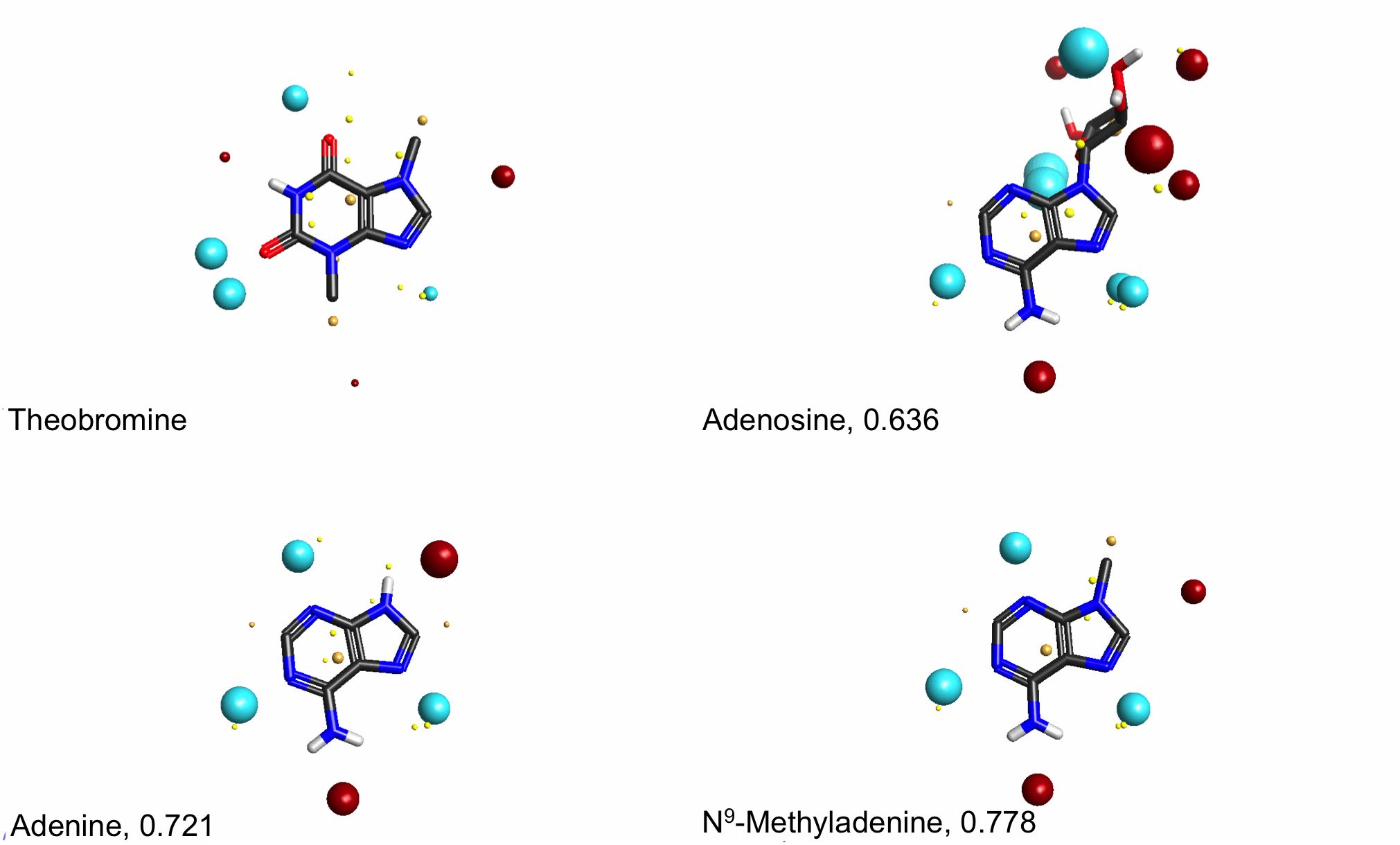
Figure 1: Theobromine and Adenosine, Adenine and a N9-methyladenine. Blue field points are negative, red field points are positive, yellow field points denote shape, and orange field points denote hydrophobicity.
Notice the lower similarity score when comparing adenosine to theobromine. The decreased similarity is a result of the molecules’ different sizes. When we look at the similarity scores for Adenine and the modified N9-methyladenine, the scores suggest higher similarity for the fragments. This suggests that theobromine is likely accessing the same part of the Adenosine Receptors’ binding site as the purine piece of the natural ligand, adenosine.
Theobromine’s Anti-Tussive Properties
In a recent publication from National Heart and Lung Institute (London)7, it was demonstrated that theobromine has significant anti-tussive (cough suppressing) properties via inhibiting action potentials in the vagus nerve. Theobromine’s activity was compared against codeine, which is the gold standard in cough suppression, and was found to be as good as codeine, and without the adverse side effects or addiction risk. BC1036 (theobromine) is currently being developed by SEEK and Pernix Therapeutics and is has just begun Phase III trials.
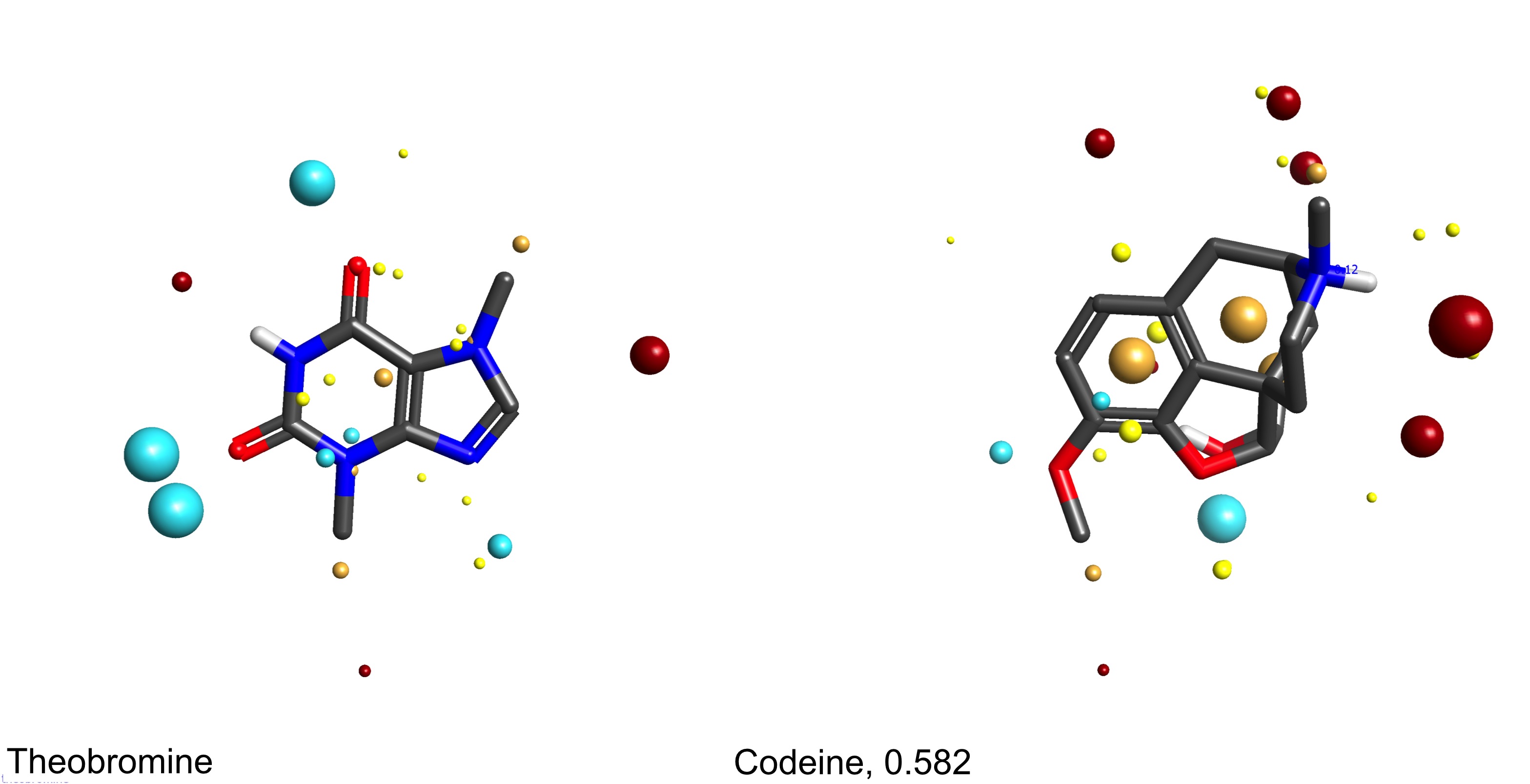
Figure 2: Theobromine and codeine compared in field point space. The low similarity score leads us to hypothesize that these molecules are likely to be binding to different receptors or alternate areas of the same receptor responsible for relaxation of the vagus nerve.
Desktop Virtual Screening
With the plethora of information about the pharmacology of chocolate, I thought it would be interesting to run a desktop virtual screen of theobromine against the Drug Bank’s databases8 of approved drugs using forgeV10. Since theobromine is a fairly rigid flat molecule, we don’t need to be concerned with elucidating a binding mode.
Examination of the PDB structure9 3RFM, in which caffeine is bound in the A2a receptor, showed the binding conformation of caffeine to be flat and rigid, comparable to the theobromine conformation used as a starting point reference for the experiments outlined in this article.
Before conducting any experiments, the Drug Bank databases were visually inspected and curated (i.e., removal of counter ions, waters, etc.), leaving only the drug structure. The structures within the approved database ranged from quite small to quite large and floppy, so in hindsight, I should have run only their small molecule database – it would have been far less stress on my poor laptop.
When aligning molecules under Normal settings within forgeV10 (or torchV10), it is important to note that the molecules are not aligned simply on structure, but on their field point patterns – it’s well reported that even when the 2D structural similarity is low, it’s possible that two compounds can have similar “personalities” (i.e., shape, hydrophobicity, and charge distribution)3.
Results
In the approved drugs database, the top hits were as expected – theobromine (0.998) and caffeine (0.942).
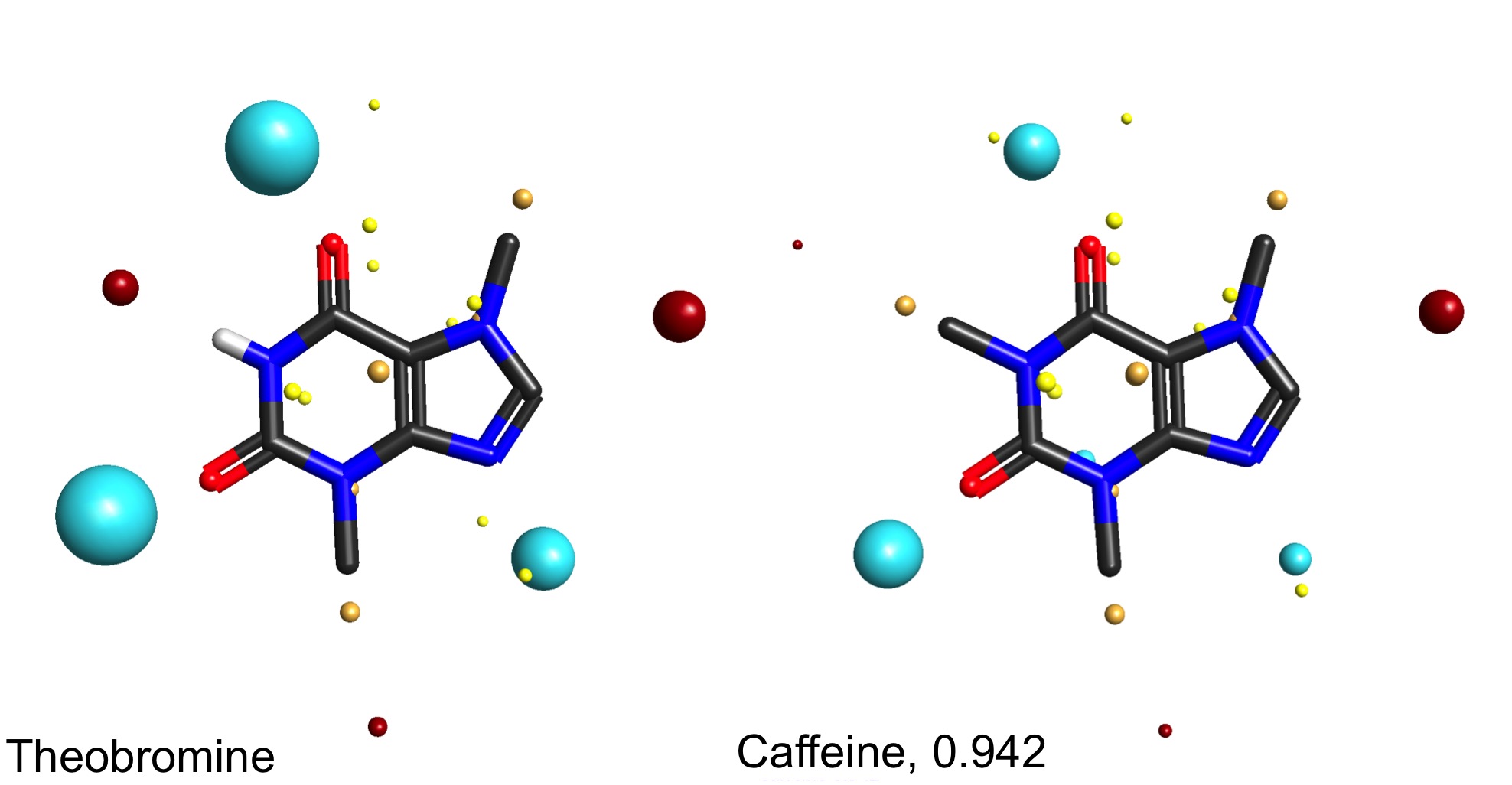
Figure 3: Comparing Theobromine and Caffeine.
The next best scoring results were a series of PDE inhibitors that result in vasodilation and bronchodilation, and are used in treatment for asthma and COPD patients. These are as expected, as the xanthine moiety is conserved through this set of compounds.
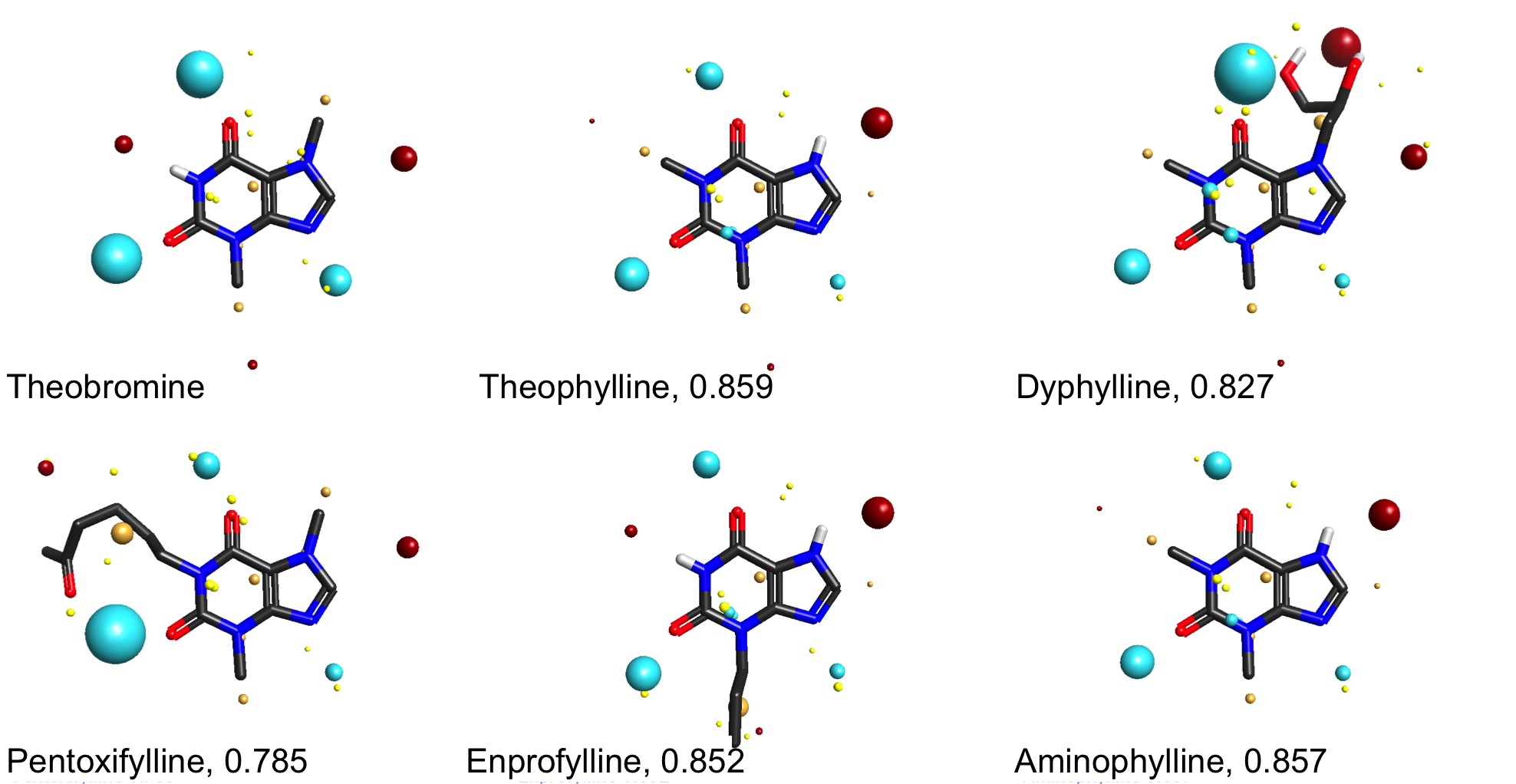
Figure 4: Comparing Theobromine to PDE inhibitors used for vasodilation and bronchiodilation for the treatment of asthma and COPD.
A surprising set of hits were lower scoring (0.729-0.799), but don’t share the xanthine scaffold.
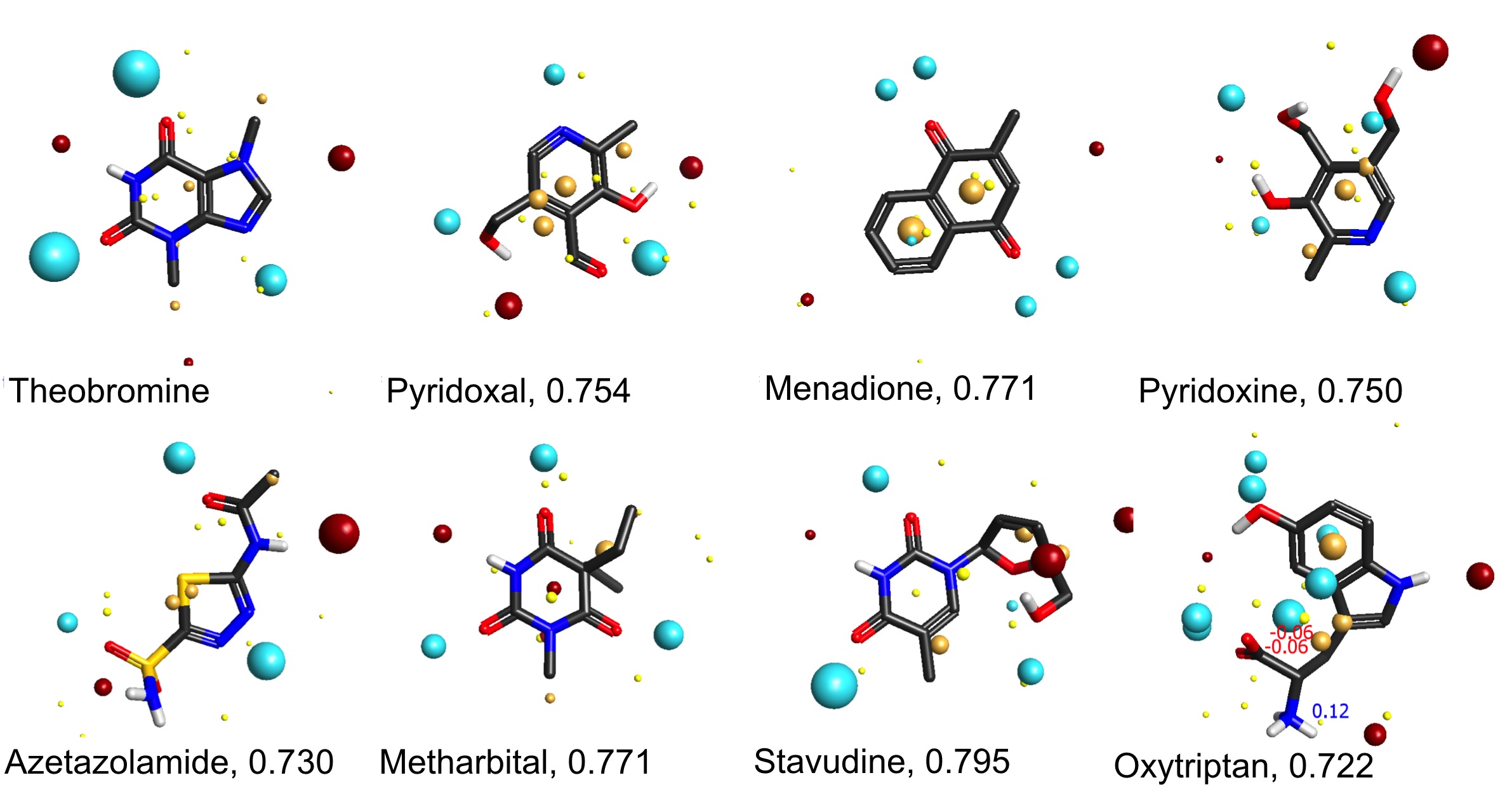
Figure 5: Lower scoring comparisons for Theobromine. The similarity scores aren’t fantastic, but they are still worth a look.
Azetazolamide is carbonic anhydrase inhibitor used as an anti-convulsant and to relieve intracranial hypertension; Pyridoxal and Pyridoxine are forms of Vitamin B6; Menadione is Vitamin K3; Metharbital is an anti-convulsant barbiturate with similar properties to phenobarbital; Stavudine is a nucleoside analog reverse transcriptase inhibitor (NARTI) with some activity against HIV; and Oxitriptan is a chemical precursor to serontonin and melatonin, and is sold as a nutritional supplement for anti-depression and insomnia.
It is noteworthy that if we look at the rotamers of the hydroxyl groups of pyridoxal and pyridoxine, the alignment score decreases.
Could chocolate be a vitamin/anti-depressant truth-serum that helps with high blood pressure and HIV? Seems like a snake-oil claim, like those single cures sold in the late 19th century that simultaneously cured diarrhea and constipation!
These lower scoring results are on the borderline of what I would consider worth a peek, but at the same time, it’s interesting to note that there are some similarities to theobromine – perhaps a re-profiling study is in order? (See Rob Scoffin’s recent posts for more information about teaching old drugs new tricks).
Summary
In cases presented above and examining the hits from the desktop virtual screens, it’s clear that the pharmacological activity of theobromine is both exceptional and diverse. Being a small molecule, it’s no surprise that this fragment can access binding sites in a variety of targets to achieve medicinal effects!
To answer the question of whether chocolate is druggable, given the success of the theobromine anti-tussive drug that is currently in Phase III trials, I’d have to say “yes”. That being said, I don’t think we have enough evidence here to support confiscating Cadbury Easter eggs from your children next month with the explanation that they contain “drugs”…
Until next month,
Rae
References and Citations
- J. Ethnopharmacol., 2000, 73, 1530159; Physiol. Behav., 2011, 104 (5), 816-822.
- http://www.rcsb.org/pdb/ligand/ligandsummary.do?hetId=37T
- J. Chem. Inf. Model., 2006, 46(2), 665-676.
- www.legalhighsforum.com/archive/index.php/t-2758.html
- Kratom is a traditional Thai medicine used to treat chronic pain and opioid dependence. It is not currently regulated in the USA or Europe.
- Eur. J. Pharmacology, 1998, 347 (1), 1-11.; Anesthesia & Analgesia, 2007, 105 (2), 489-494.; Korean J. Pain, 2011, 24 (1), 7-12.
- The FASEB Journal, 2005, 19 (3), 231-233.
- DrugBank 3.0: a comprehensive resource for ‘omics’ research on drugs. Knox C, Law V, Jewison T, Liu P, Ly S, Frolkis A, Pon A, Banco K, Mak C, Neveu V, Djoumbou Y, Eisner R, Guo AC, Wishart DS. Nucleic Acids Res. 2011 Jan;39(Database issue):D1035-41.
PMID: 21059682; DrugBank: a knowledgebase for drugs, drug actions and drug targets. Wishart DS, Knox C, Guo AC, Cheng D, Shrivastava S, Tzur D, Gautam B, Hassanali M. Nucleic Acids Res. 2008 Jan;36(Database issue):D901-6.
PMID: 18048412; DrugBank: a comprehensive resource for in silico drug discovery and exploration. Wishart DS, Knox C, Guo AC, Shrivastava S, Hassanali M, Stothard P, Chang Z, Woolsey J. Nucleic Acids Res. 2006 Jan 1;34(Database issue):D668-72.
PMID: 16381955.
- http://www.rcsb.org/pdb/explore/explore.do?structureId=3rfm
Additional Notes
Safety First – Theobromine is extremely toxic to dogs (LD50 – 300 mg/kg). Please be careful to keep your chocolate treats (especially dark chocolate) out of reach of pets. Chocolate + Dog = Expensive visit to the vet
Adenosine A1 Antagonism
The Adenosine A1 receptor is a GCPR receptor for which adenosine is the endogenous ligand, and has been found to be involved in sleep promotion by inhibiting cholinergic receptors in the basal forebrain, and also present in the vascular system’s smooth muscle to regulate myocardial oxygen consumption and blood flow through the heart muscle.
Adenosine A2a Antagonism
The Adenosine A2a receptor is a GCPR receptor (PDB:3EML) with adenosine as the endogenous ligand. A2a regulates myocardial oxygen consumption by vasodilating coronary arties, which may result in hypotension (decreased blood pressure). In the brain, it regulates the release of neurotransmitters glutamate and dopamine, and has been indicated as a potential target for treating Parkinson’s Disease, addiction, and mood disorders.




